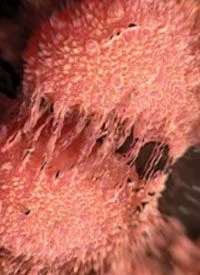Article
Fixed-Duration Bendamustine/Rituximab Is Beneficial Irrespective of Mutation Status in Waldenström Macroglobulinemia
Author(s):
Fixed-duration bendamustine plus rituximab was effective in patients with previously untreated Waldenström macroglobulinemia, regardless of MYD88L265P mutation status, but the presence of the CXCR4WHIM mutation may be associated with resistance to the combination.

Fixed-duration bendamustine plus rituximab (Rituxan; BR) was effective in patients with previously untreated Waldenström macroglobulinemia, regardless of MYD88L265P mutation status, but the presence of the CXCR4WHIM mutation may be associated with resistance to the combination, according to results from an international, multicenter collaborative study presented at the 19th International Myeloma Society Annual Meeting.
At a median follow-up of 4 years (95%, CI, 3.6-4.6), fixed-duration BR led to an estimated median progression-free survival (PFS) of 5.9 years (95% CI, 5.3-not reached [NR]), as well as an estimated 5-year overall survival (OS) rate of 90%. Among the 174 patients who were evaluable for response, the overall response rate was 95%, and the major response rate was 93%.
“Fixed-duration BR is a highly effective regimen for patients with previously untreated, symptomatic Waldenström macroglobulinemia, irrespective of MYD88L265P mutation status,” study authors noted.
Although BR is a proven beneficial and frequently utilized treatment option in patients presenting with indolent lymphomas, including Waldenström macroglobulinemia, it remains unclear whether the efficacy of this chemoimmunotherapy treatment is affected by somatic mutations within the MYD88 and the CXCR4 genes. This unmet need served as the basis for studying a large cohort of patients with Waldenström macroglobulinemia in an international, multicenter evaluation.
The medical charts of patients who had been diagnosed with active Waldenström macroglobulinemia and received BR between January 2012 and June 2021 were reviewed and evaluated in this study. The MYD88L265P and CXCR4WHIM mutation status were recorded if available.
A total of 248 patients were treated with BR; 208 patients received induction without rituximab maintenance and were included in the primary analysis.
The median age at the start of treatment was 65 years (range, 40-86) and most patients were male (64%).
Patients who did not receive rituximab maintenance had a median hemoglobin of 9.8 g/dL (interquartile range [IQR], 8.3-11.2) and a median platelet count of 202 x 109/L (IQR, 111-318). Patients had a median beta-2 microglobulin level of 3.6 mcg/mL (IQR, 2.5-5.2), a lactate dehydrogenase above the upper limit of normal of 14%, and a median bone marrow lymphoplasmacytic infiltrate of 60% (IQR, 30%-80%).
In total, 15% of patients were low risk, 40% of patients were intermediate risk, and 44% of patients were high risk.
A total of 131 patients (63%) had known MYD88L265P mutation status, and 116 (88%) presented with anMYD88L265P genotype. The very good partial response or better rate was 41% and 50% in patients with an MYD88L265P and MYD88WT genotype, respectively (P = .55). The PFS rate for patients with an MYD88L265Por a MYD88WT genotype at 4 years was 71% (P = .44).
A total of 42 patients (20%) had known CXCR4WHIM mutation status, and 28% harbored a CXCR4WHIMmutation. The very good partial response or better rate was numerically lower at 33% in this population vs 57% in those with a known CXCR4WT genotype (P = .3). Moreover, the data illustrated a shorter PFS in patients who had a CXCR4WHIM mutation of 3.9 years (95% CI, 0.8-NR) vs 5.5 years (95% CI, 5.3-NR) in patients with a CXCR4WT genotype.
Notably, patients with disease progression within 2 years of initial dosing of BR (11%) experienced an inferior OS rate of 75% compared with 94% in patients without progression at this time (P = .03).
Additional results showed that the 4-year PFS rate in the rituximab maintenance group was 89% compared with 73% in the group who did not receive rituximab maintenance (P = .09). The 5-year OS rate was 85% in both groups (P = .99).
The authors concluded that the preliminary findings of this data analysis warrant further investigation of CXCR4WHIM and MYD88L265P mutations in patients with Waldenström macroglobulinemia.
Reference
- Zanwar S, Abeykoon J, Castillo J, et al. Bendamustine rituximab primary therapy for waldenström macroglobulinemia: an international, multicenter collaborative study. Presented at: 19th International Myeloma Society Annual Meeting. August 25-27, 2022. Los Angeles, CA. P-169









